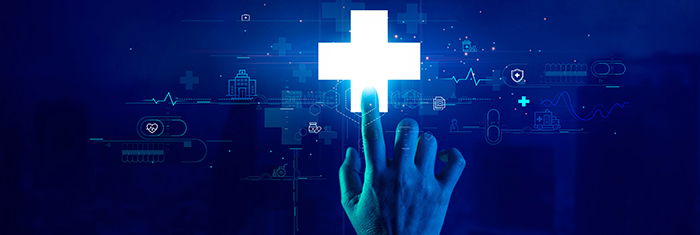How RISC-V is Shaking Up the Semiconductor Industry as an Open-Source Challenger
Established architectures such as x86 and ARM have long dominated the semiconductor industry. However, a new player has emerged, promising to revolutionize the landscape: RISC-V. This open standard instruction set architecture (ISA) is gaining traction for its flexibility, scalability, and cost-effectiveness. Let’s explore the rise of RISC-V, its impact on the semiconductor industry, and what the future holds for this innovative technology.
Read More
Top Cloud Governance Strategies and Trends for 2024 and Beyond
As organizations continue to embrace cloud computing, effective cloud governance has never been more critical. Ensuring that cloud environments are secure, compliant, and cost-efficient is essential for long-term success. This blog will explore best practices for cloud governance strategies and examine emerging trends shaping the future of cloud management. By understanding and implementing these practices, organizations can navigate the complexities of the cloud and stay ahead of the curve.
Read More
Mastering Cloud Governance by Balancing Security and Innovation
As organizations transition to cloud-based infrastructures, robust governance controls become increasingly critical.. Implementing these controls is essential to maintaining cloud security, compliance, and operational efficiency. This blog focuses on the practical aspects of cloud governance, detailing how automated monitoring, automated cloud governance, continuous compliance, and effective auditing can streamline cloud management.
Read More
Mastering Cloud Governance: Key Strategies for Security and Efficiency
Introduction In today's rapidly evolving digital landscape, cloud computing has become a cornerstone for businesses seeking scalability, flexibility, and cost-efficiency. However, with the benefits of cloud adoption come significant challenges, particularly around managing and securing cloud environments. Cloud governance frameworks provide a structured approach to address these challenges by establishing policies and controls that ensure your cloud operations remain secure, compliant, and efficient.
Read More
Breaking Free: Essential Strategies to Avoid Cloud Vendor Lock-In
As cloud computing becomes integral to modern business operations, the risk of vendor lock-in can hinder an organization's ability to innovate and optimize costs. Being tied to a single cloud provider such as AWS, Azure, GCP, or OCI can lead to increased expenses, limited flexibility, and potential service disruptions. Should you be locked to just one? This blog delves into key strategies that help businesses break free from vendor lock-in, such as leveraging cloud-agnostic architectures, adopting open-source solutions, and implementing robust exit strategies.
Read More![The Multi-Cloud Revolution: Breaking Free from Vendor Lock-in [2024 Updated]](/sites/default/files/2024-08/The-Multi-Cloud-Revolution-Thumb.jpg)
The Multi-Cloud Revolution: Breaking Free from Vendor Lock-in [2024 Updated]
Understanding the concept of vendor lock-in is crucial for any consumer. Vendor lock-in is a significant concern for businesses moving to the cloud. To effectively navigate the multi-cloud landscape, it’s vital to grasp what vendor lock-in is and the risks it presents. What is Vendor Lock-in? Vendor lock-in happens when a business relies heavily on a single cloud provider’s services, making it challenging or costly to switch to another vendor. This situation often arises because:
Read More
Exploring the Future of Wearable Health Technology: Innovations and Implications
The landscape of wearable health technology is evolving rapidly, promising exciting advancements in how we manage our health and wellness. With breakthroughs in AI, personalized health insights, and expansion into new areas of healthcare, wearables are set to revolutionize the industry. This blog delves into the future trends of wearable health technology, highlighting key innovations and their potential impact on health and wellness management.
Read More
Wearable Health Technology: Types and Benefits
Wearable health technology, also known as mHealth solutions, is revolutionizing how we monitor and maintain our wellness. From smartwatches tracking daily steps to high-tech devices for chronic disease management, wearables provide real-time insights into our health. This blog explores the types of wearable health devices and the technological advancements fueling this transformation.
Read More
IoT in Healthcare: Revolutionizing Patient Care through Connected Devices in 2024
Healthcare facilities are encountering a significant hurdle: managing vast amounts of data at unprecedented speeds. One proposed remedy is incorporating the Internet of Things (IoT) into healthcare infrastructures. The Internet of Things (IoT) has transformed many industries, including healthcare. In this article, we explore how IoT is changing healthcare and improving patient care through connected devices. By using real-time monitoring and analyzing data, IoT is making healthcare more efficient and tailored to individual needs.
Read More
FHIR vs. HL7 Comparison: Key Differences and Your Ideal Choice in 2024
In today's rapidly evolving healthcare landscape, efficient data exchange is more crucial than ever. Organizations rely on robust standards to ensure seamless communication and interoperability across various systems. Two of the most widely acknowledged standards in this field are FHIR (Fast Healthcare Interoperability Resources) and HL7 (Health Level Seven). Understanding the distinctions between these standards and determining which is better suited for specific needs is critical for healthcare providers and organizations in 2024.
Read More
Unleashing the Power of Oracle Cloud Infrastructure: A Modern Perspective
In today's rapidly evolving digital landscape, businesses are racing to achieve digital transformation. The need for robust, scalable, and secure cloud solutions has never been more critical. This article explores how Oracle Cloud Infrastructure (OCI) is not just a solution, but a catalyst that is redefining the way companies operate, innovate, and compete in the digital era. We'll delve into OCI's transformative impact, its benefits, challenges it addresses, and strategies for leveraging its capabilities for successful cloud migration.
Read More
Advancements in GenAI for Enhanced O&M and Computing Optimization
The previous blog analyzed the exciting advancements and potential use cases of telecom operators adopting Generative AI (GenAI). While that post offered a broad perspective, we're particularly interested in diving deeper into two award-winning TM Forum Catalyst projects that showcase significant practical benefits for the industry. These programs not only highlight the critical challenges operators face but also demonstrate how GenAI can deliver impactful solutions, focusing on generating new revenue streams and boosting efficiency through cost reduction.
Read MoreTrending Posts
-
Fostering an Experimentation Culture: The Key to Creative UX Innovation By Mohamed Vaseem
-
The Metaverse and VR’s Advancements Extend the Boundaries of Virtual Experiences By Srinivasan Subramani
-
Real-time NPC Interaction and Dialogue Systems in Video Games By Saurabh Goel
